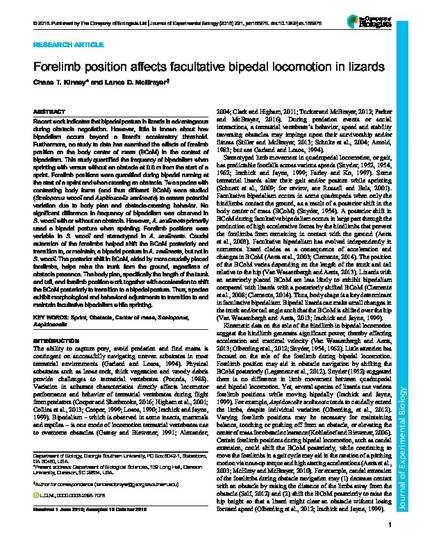
Recent work indicates that bipedal posture in lizards is advantageous during obstacle negotiation. However, little is known about how bipedalism occurs beyond a lizard's acceleratory threshold. Furthermore, no study to date has examined the effects of forelimb position on the body center of mass (BCoM) in the context of bipedalism. This study quantified the frequency of bipedalism when sprinting with versus without an obstacle at 0.8 m from the start of a sprint. Forelimb positions were quantified during bipedal running at the start of a sprint and when crossing an obstacle. Two species with contrasting body forms (and thus different BCoM) were studied (Sceloporus woodi and Aspidoscelis sexlineata) to assess potential variation due to body plan and obstacle-crossing behavior. No significant difference in frequency of bipedalism was observed in S. woodi with or without an obstacle. However, A. sexlineata primarily used a bipedal posture when sprinting. Forelimb positions were variable in S. woodi and stereotyped in A. sexlineata. Caudal extension of the forelimbs helped shift the BCoM posteriorly and transition to, or maintain, a bipedal posture in A. sexlineata, but not in S. woodi. The posterior shift in BCoM, aided by more caudally placed forelimbs, helps raise the trunk from the ground, regardless of obstacle presence. The body plan, specifically the length of the trunk and tail, and forelimb position work together with acceleration to shift the BCoM posteriorly to transition to a bipedal posture. Thus, species exhibit morphological and behavioral adjustments to transition to and maintain facultative bipedalism while sprinting.
Available at: http://works.bepress.com/lance-mcbrayer/118/

Copyright and licensing: